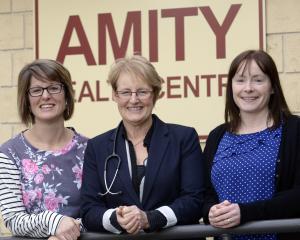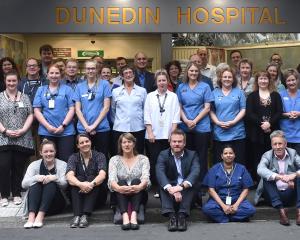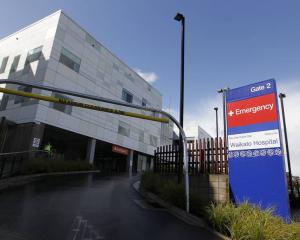Otago and Southland's public health system is threatened. If the two district health boards are to provide quality services they must pool resources regionally.
That's the blunt message from boards' chief executive, Brian Rousseau, in the regional clinical services concept paper which went out for consultation yesterday.
The boards' future viability and ability to provide quality services were threatened with staffing issues, current funding, cost growth and increased expectations in an area with sparse population.
He emphasised regional clinical services were "absolutely not" about centralisation in which resources in the smaller Southland board would be concentrated in the larger one. They were also not about cost cutting, but co-operation, collaboration and teamwork, and making the most of resources to provide the best and most efficient service to people in both provinces.
Regional clinical services, as suggested by the paper, would be clinically-led and funded from a single pool, with equal access across both board areas based on need, and provided as close to patients' homes as possible.
In some instances, this could mean clinicians travel more, as it made more sense to have one clinician travelling to treat 20 patients than the reverse.
Mr Rousseau said the alternative would be providing centralised services which would be worse for patients.
Where a service could not be sustained across the two provinces, consideration should be given to creating a wider regional clinical network in conjunction with other boards, such as Canterbury, or buying those services outside the regions.
Some services would be on single sites and some on more than one site. In those situations were there was more than one site there would be formal collaboration.
The boards already have two regional services, Southern Blood and Cancer and cardiac surgery.
In the paper, Mr Rousseau said he believed the success of Southern Blood and Cancer was in "in no small part" due to its operational side being driven and developed by "coal-face" clinicians. Such collaboration is emphasised in the paper.
The document does not give any indication of what services might come next and Mr Rousseau said it was too early to name any possibilities, although discussions were being held with those who have expressed interest in exploring a networked service.
Mr Rousseau said he expected the paper to be fairly positively received. People could see that in other areas of the country, such as Whanganui and the West Coast, small boards were having difficulty delivering services and were aware of the reality.
It was important to get the principles behind regional services "really set in concrete", as that would determine a consistent way for services to be established.
Regardless of where people lived within the regions, the population was only marginally sufficient to sustain a tertiary service base south of the Waitaki Valley, he said.
Both boards had workforce problems and small services vulnerable to the loss of key clinicians which could lead to service failure for a locality.
Quality and safety of practice in small services within both boards was potentially impaired due to insufficient peer review, peer support and volumes to ensure the skills of the workforce could be preserved.
Staff demanding - justifiably so - a better balance between work and the rest of life also had an impact. Rosters involving only two or three people posed real challenges to achieving that balance.
The gap between funding and costs was expected to increase during the next two years.
While there could be some relief through the population-based funding (PBF) review, both boards were considered overfunded under PBF and faced ongoing difficulties to fund capital works when they had operating deficits.
The next steps
• December 2008-March 2009: Strategy for regional clinical services to be developed and feedback sought with the final strategy agreed by boards in mid-March.
• March-May 2009: Stock take and categorisation of services to be undertaken.
• May 2009: Action plan for introduction of regionalisation of identified services to be established and sent out for consultation.
• June 2009: Final form of the plan to be approved.
• July 2009: Begin discussion with services to start implementing the plan.
Progress report
• February 2007: Southern Alliance established between the two district health boards and regional management structure set up.
• October 2007: Otago chief executive Brian Rousseau appointed temporarily to corresponding job with Southland board.
• December 2007: Southern Blood and Cancer service across regions begins. Cardiac surgery is also practised regionally. Following local body elections in October 2007, boards decide to share membership of two advisory committees, holding meetings alternately in Dunedin and Invercargill.
• February 2008: Clinical services plan for Otago says amalgamation of the two boards would make integration of services easier. It suggests ophthalmology and internal medicine could be the next services to go regional.
• April 2008: Boards to work together to carry out a hospital capacity review looking at what is required for the two regions.
• October 2008: Mr Rousseau becomes the first district health board chief executive to be permanently appointed across two boards.
• October 2008: Extended regional management structure proposed; feedback sought by November 14.
• Late October 2008: Regional clinical services concept paper goes out for consultation. Consultation closes December 5.











